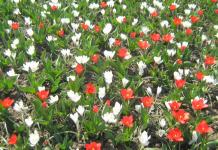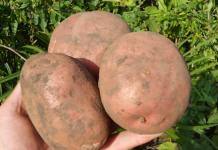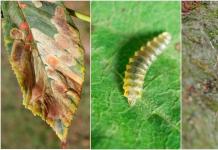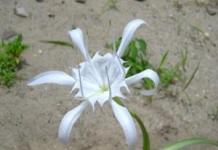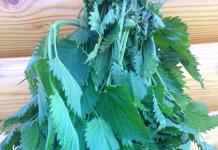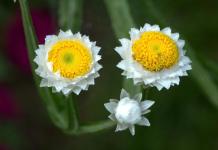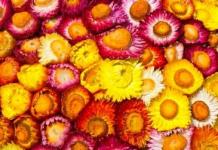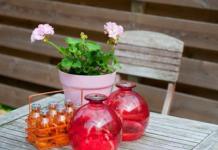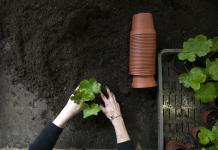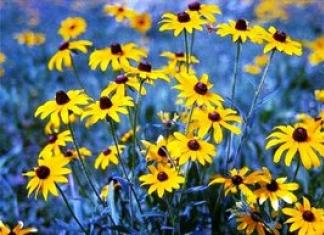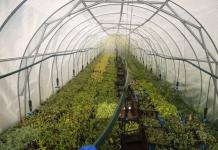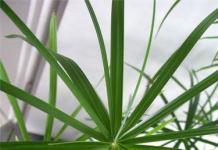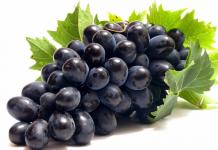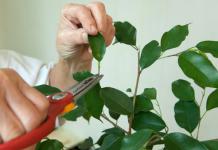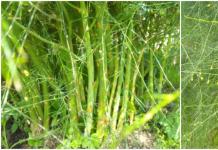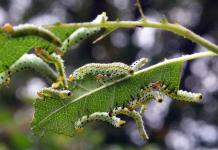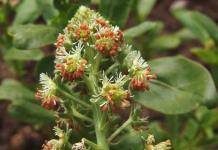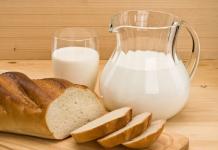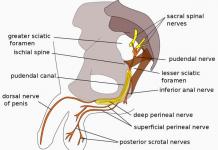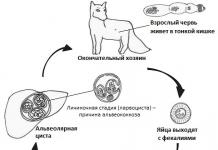Onions are herbaceous perennial... It is successfully used in the cuisines of many countries. This can be explained by its taste and many useful properties... This plant contains essential oils, carotene, ascorbic acid, protein sources, various sugars and vitamins, organic acids. Also in onions there are mineral salts of magnesium, calcium, iron, phosphorus, potassium and sodium. As you can see, there is no need to argue about the benefits of the plant in question. Indeed, it is thanks to this combination of substances that onions can be used as an antiseptic, to normalize digestion and in many other areas of traditional medicine.
Onion varieties
The history of the plant in question can be traced back to about the fourth millennium BC. Its homeland is Central Asia. After many centuries, this plant, through natural and artificial selection, was divided into many varieties. We will consider some of them in our article.

Growing onions: methods
Onions are currently grown in a variety of ways. But of them, only four main methods are distinguished for obtaining a crop of this plant.
1. Sowing onion sets.
2. Planting black onion seeds.
3. Growing seedlings from black onion seeds.
4. Vegetative method of harvesting small-sized bulbs (sampling).
How to get harvest from onion sets?
The oldest method of growing the vegetable in question is the method of growing from onion sets. In order to get an excellent turnip, specimens of sevka are carefully selected in size from one to two centimeters. A green feather is obtained from large bulbs. And smaller specimens can also be used to grow turnip onions, but only in winter sowing. There are also some tricks to keep in mind. They consist in the fact that the larger the set is, the sooner it will begin to shoot. A specimen less than a centimeter in diameter will not be able to produce seeds.
If you want to get early onion turnips, then it is worth sowing small onion sets towards the end of September. And it is desirable that you have time before the tenth of October, because the plant needs to take root before the onset of frost. If you do everything right, then the onion will root perfectly for the winter. In this case, the ovaries will be much larger and will ripen earlier than when planting seedlings in the spring. 
Growing a vegetable from black onion seeds
If we want to get a crop in this way, then sowing is carried out in early spring. For this, the soil on the site has been harvested since autumn. Also sown onion for the winter. Moreover, the vegetable in question ripens much earlier than the one that was planted in the spring. For such sowing, a plot of land with a southern slope, with non-flooded and clean, non-clogged soil, is selected.
For late sowing of seeds of nigella in the beds, grooves are prepared. This can be done with a hoe. We place the seeds in the ground at the first frost. They should be located shallow, about 5 mm from the surface. All this is covered with humus or peat by three centimeters, which will allow winter period insulate the seeds. 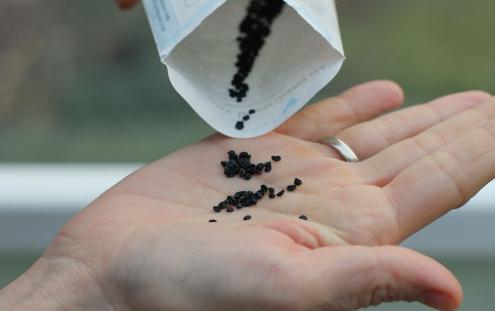
We grow onions using seedlings
This method is used very rarely, since it is the most laborious of all the varieties of growing the plant in question. But it is when a vegetable is cultivated with the help of seedlings that the largest bulbs are obtained. Also, this method is very effective when applied to small areas.
For the seedling method, onions are used (photo is presented below) of the following varieties: Krasnodarsky-35, Kaba and Karatalsky. 
Vegetative method of harvesting
Typically, varieties of northern onions are propagated vegetatively. For this, very small specimens of the vegetable are used, which are capable of creating a nest of eight to twenty ovaries. For vegetative propagation, the bulbs are grown on ridges or beds. They have been prepared for this since the fall. The bed is divided into four rows. Do it with a hoe or stick. Plants in a row are placed 25 centimeters apart.
With vegetative propagation, onions are planted in May. If the vegetables, rising on the roots, begin to crawl out of the ground, then they are sprinkled with soil so that they are completely hidden. Onions are harvested after lodging of the leaves, in August. Plants extracted from the ground are thoroughly dried and the nests are divided into bulbs. Vegetative propagation of onions is the most productive.
When to harvest onions?
Harvesting the vegetable in question is perhaps the most laborious moment in the whole process of growing it. Ripening of onions takes from sixty-five to eighty-five days. The difference is, of course, noticeable. The length of the ripening period depends on the region in which the plant is grown, the weather and the variety.
But still, when to harvest onions? How to do it right? Onions are harvested in clear and sunny weather from mid-August to the first half of September, after wilting and falling of the leaves of the plant. To do this, watering is stopped a few days before harvesting. Sometimes the leaves are put by hand (if they did not fall on time), as this is necessary to prepare the onions for digging. Then the plants are removed from the ground using a pitchfork. In no case should you pull out the bulbs. After harvesting, the vegetable in question is left in the beds for drying. This is done if the weather is good. Or they leave the crop under a canopy. Onions must be dried. Otherwise, it will simply rot. If you are going to dry onions in the oven, then it is important not to overdo it, as its scales can crack. In this case, your crop will be lost very quickly.
After drying the vegetables, their roots are cut to one and a half centimeters and the stems. This completes the harvesting of onions.
How to store onions?
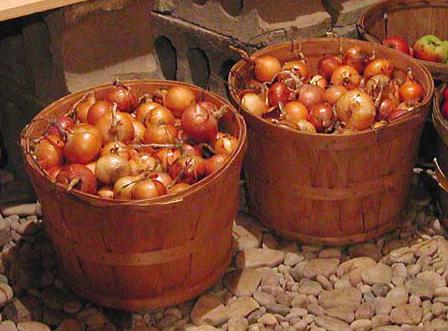 In order to preserve your harvest as long as possible, it is necessary to dry the onions with high quality. The storage of the vegetables in question takes place in wooden boxes. The folded bulbs should not exceed twenty-five centimeters in height, and on top they are covered with a layer of their own husk. Holes are made in the wooden boxes on the sides for ventilation.
In order to preserve your harvest as long as possible, it is necessary to dry the onions with high quality. The storage of the vegetables in question takes place in wooden boxes. The folded bulbs should not exceed twenty-five centimeters in height, and on top they are covered with a layer of their own husk. Holes are made in the wooden boxes on the sides for ventilation.
Choose a cool and dry place for best storage. Usually a basement or cellar is used for this. A balcony loggia is also perfect. Onions in crates should be periodically inspected for tainted items.
Onions as a medicine
 In many countries in folk medicine onions are used. The benefits of this plant cannot be overstated. During the time of the great Roman Empire, onions were necessarily included in the diet of the military, since the soldiers believed that it was he who raised their morale and courage. In Egypt, the vegetable in question was praised as a deity. Under Hippocrates, they treated patients with gout, rheumatism and obesity.
In many countries in folk medicine onions are used. The benefits of this plant cannot be overstated. During the time of the great Roman Empire, onions were necessarily included in the diet of the military, since the soldiers believed that it was he who raised their morale and courage. In Egypt, the vegetable in question was praised as a deity. Under Hippocrates, they treated patients with gout, rheumatism and obesity.
At the present time, it has been found that onions are perfectly able to stimulate the secretion of glands, normalize digestive processes, are a powerful antiseptic and heal wounds. It contains a large number of vitamins and minerals, and its specific smell can whet your appetite. So onions for the winter will enrich your diet and provide protection against all kinds of colds.
Like other vegetables, onions are greatest when they are fully ripe. Plus, it will keep better during the winter if you dug it up on time. It remains only to find out when to collect onions from the garden. To do this, you can use external signs, the lunar calendar and simple mathematical calculations. But first things first.
Harvesting onions
You can find out when to dig onions based on external signs if you observe the garden. When you see that the feathers of the onion have begun to dry out and turn yellow, the stems are laid on the garden bed, the neck has dried up, has become thin and dry, you can try to pull out the bulb and look at its outer scales. If they rustle and come off easily, then the time has come when you need to dig out the onions.
It is important to stop watering the onions two weeks before the expected harvesting period. This will give him the opportunity to dry out slightly, which will have a positive effect on the storage quality of the vegetable. And in order to determine when to stop watering, you need to calculate the ripening period of the onions.
Mathematically, this should be done as follows: add 68-83 days to the landing date, depending on whether the summer was rainy or sunny. The less sun there was, the longer the ripening period. Having calculated the approximate date, which will most likely be at the end of July-August, you will know when to stop watering.
Collecting onions by lunar calendar is calculated individually, since the terms will vary slightly each year. The crop is removed from the garden during the waning moon in July or early August.
How to collect onions for the winter?
The bow is usually simply pulled out of the ground. But to preserve the feathers that we still need, you can first dig it up a little. This must be done in dry and clear weather, which has lasted for several days in a row.
If you pick the onion in the morning, you can make it up on the garden bed until the evening, turning it over from time to time. You need to dry (ripen) the collected onions in the attic, balcony or any other warm and ventilated room for several days.
After drying, you need to cut off the roots and feathers of the onion, leaving a little on both sides, sort by size and put in nets or boxes with holes for ventilation. Store onions in winter in a dark and dry room at a temperature of + 15… 20 ° C. Stir the onions periodically, remove rotten onions, do not freeze, as this will lead to a loss of taste.
It appeared more than four centuries ago. He came from Ancient Egypt. Onions are an indispensable ingredient in cooking and an effective medicine in traditional medicine. It has a pungent taste and peculiar smell, and due to the content of phytoncides, it is effective against pathogenic microorganisms. No wonder this vegetable king is called "Onion - from seven ailments." It is able to improve the taste characteristics of dishes and aids in the assimilation of food.
It is not difficult to grow onions, but sometimes it takes two years to get a harvest from commercial large bulbs. They grow it not only for their own consumption, but also for sale. This is a profitable activity, because with proper agricultural technology, collection and subsequent storage, onions are able to maintain their presentation until the next harvest.
When choosing an onion variety for planting, you need to take into account its characteristics and cultivation conditions. In any case, it should be an unpretentious variety with good yield and high keeping quality.
The best of the fruitful varieties:
- Aleko. The variety is of medium ripening, the heads have a pronounced purple color. Full maturation occurs in 3-3.5 months from the moment of disembarkation. The characteristic features of onions are high yields and a lot of greenery. 2-3 onion heads weighing 90-100 grams each come out of one nest of the variety. Pros: long-term storage, rich harvest, sharp taste.
- Golden. As a result of a long and complex selection, a medium-ripening variety was bred with golden rounded flatish clucks, thanks to which it got its name. Golden has a white pulp with green and a high yield, 2-3 kg comes out from 1 m2. Bulbs of different diameters, weighing from 50 to 130 grams. Pros: high keeping quality, large heads, good taste characteristics.
- Timiryazevsky. Suitable for cultivation in northern climates. The bulbs are firm with a round or flattened shape and white flesh, each weighing 50-70. The husk is yellow-golden. Output 3.5 kg from 1 m2. Pros: high yield, good preservation, adapted to the whims of nature, short ripening period.
The best varieties of onions for storage:
- Stuttgarter rizen. Bred by German breeders. Refers to early maturing varieties. Ripens in 70 days after planting the seedlings. The head is flattened-round up to 150 grams in weight, the pulp is sharp in taste. Productivity up to 5 kg per 1 m2. Minimal care. Pros: high yield, good keeping quality, selected even bulbs of a good presentation, immunity against downy mildew.
- Sturon. Riesen, derived from the Stuttgarten variety, produces high quality heads with a regular round shape. But unlike their parent, they have a smaller nose and a thinner neck, due to which the amount of waste is reduced and drying is accelerated. Gives a rich harvest.
- Orion. Yields a good harvest from even round bulbs, each weighing up to two hundred grams. It ripens early, so it can grow in the northern regions. Keeping quality is high. It is considered the most popular variety for gardeners. Stored well.
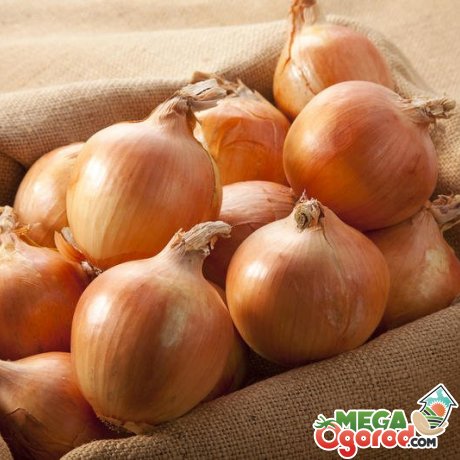
An important advantage of onions is their frost resistance. Seeds can germinate at a temperature of 5-6 degrees above zero, and 15 degrees is considered a comfortable temperature for growth. Adult onions of spicy varieties easily tolerate six-degree frosts, and for sweet ones, three-degree frost can pose a threat.
It should be noted that onions are lovers of loose and nutritious soil with neutral or slightly alkaline PH and abundant sunlight. And the neighborhood with weeds has a depressing effect on the crop. active development.
It is advisable to plant onions in an elevated area, and the soil should be saturated with nutrients.
The place after, peas, and, which were fed with manure fertilizers, will be successful, because the introduction fresh manure not recommended directly for onions. The culture will start to ache and will not mature. For onions, a mixture of humus with superphosphate, ammonium nitrate and potassium salt is suitable.
They begin to prepare the soil after clearing the site from last year's planting. The soil is loosened to a depth of 6 centimeters. In mid-September, the soil is re-dug up (depth on the bayonet of a shovel) together with superphosphate. Due to the fact that onions are planted early, the site needs to be fertilized with humus immediately after the snow cover has melted and form beds, 15 to 25 cm high and 40 cm wide. into the ground.
Reproduction methods
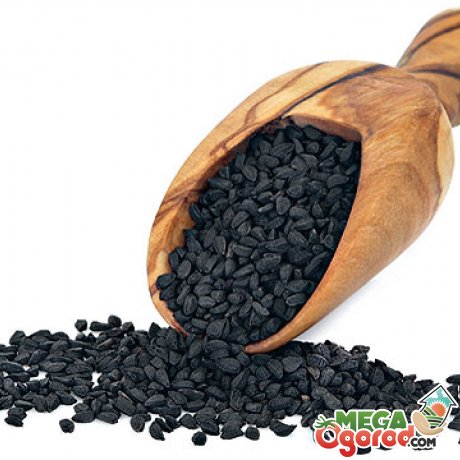
There are several ways to propagate onions:
- Seed - by sowing onion seed.
- Sevkovy.
Seed method. It involves sowing nigella - onion seeds in the ground. As a result, the set will be ready for the next season. Seed materials are either purchased or harvested on their own. To do this, in spring or autumn, adult heads are planted, which by the middle of summer release arrows with spherical inflorescences at the ends.
After that, black seeds are formed in place of the inflorescences, which are collected, dried and stored in a cloth bag until planting.
Before sowing, the seeds are sorted, selecting healthy and large specimens. To do this, you can use a sieve. For rapid germination, the seeds are soaked in methylene blue or manganese solution for a day and placed in burlap until sprouts appear. Do not allow the seeds to dry out. Sowing germinated seeds into prepared furrows with a compacted bottom, which are done at intervals of 20 centimeters. The seeds are deepened by 2-4 centimeters and using peat or humus.
It is possible to carry out winter sowing of nigella. The seeds are buried 1.5-2 cm and mulched. In the spring, when the temperature rises to 3-4 degrees, the seeds will germinate. The winter method allows you to get sowing earlier.
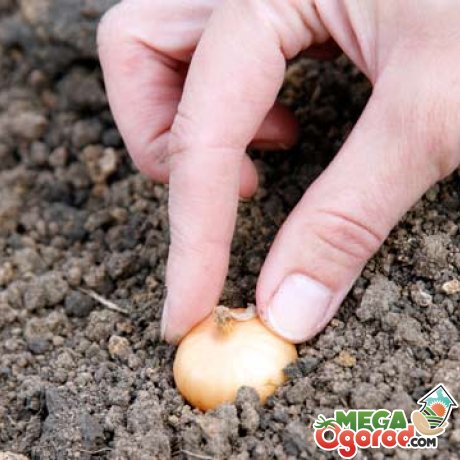
- Sevok is sorted out, selecting heads with a diameter of 0.5 cm to 3 cm.
- The purchased material is preliminarily placed in a cardboard box and heated on a battery for 9-12 hours. Home sevok does not need warming up.
- Next, the bulbs are soaked in a mineral solution or growth stimulator for about ten hours and spend copper sulfate diluted with water.
- The roots should be treated with wood ash.
- Seed material is buried 5-6 centimeters into the ground at temperatures above 10 degrees Celsius so that the seed arrow does not grow.
- A ten-centimeter interval is observed between the bulbs, and 20-25 cm between the rows.
- The soil is mulched with peat.
- The feathers will hatch within a week.
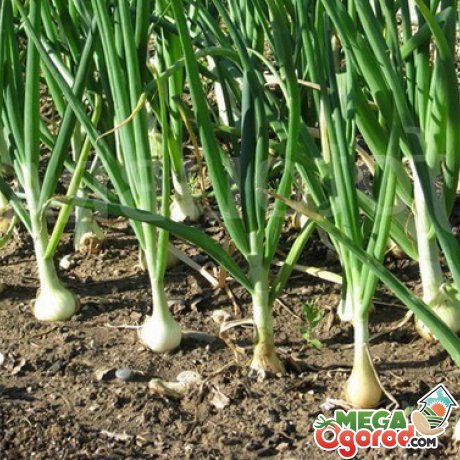
Culture care includes:
- Watering. The crop should be watered abundantly in May, June and the first half of July. Irrigation is carried out once a week. It is during this period that onions are actively developing. By the end of July, watering should be excluded so that the ripening bulbs do not become watery.
- Loosening the soil. The soil should be loosened to a depth of 2-3 cm to prevent the appearance of a crust or its removal. Loosening also helps prevent onion diseases and the reproduction of earthen, as well as reduce the overgrowth of weeds. Such manipulations enrich the soil with oxygen and improve the access of moisture and nutrients.
- Weeding. The beds should be weeded regularly, as weeds have a detrimental effect on the onion crop. They should be destroyed while they are still small. Otherwise, overgrown weeds can move the bulbs and damage the roots, as a result of which the onion will stop developing. Weeding is carried out after the soil is well moistened.
- ... For the first time, plants are fed 14-16 days after planting using mullein solution or diluted with urea. Fertilizers made from ammonium nitrate are also suitable. The second procedure is carried out two to three weeks later, by mixing bird droppings or with superphosphate and potassium fertilizers in equal proportions. The third stage of fertilization is carried out when the bulbs reach their maximum size. At this stage, complex feeding is used. The slowed down development of feathers indicates a lack of nutrients. Onions should be fed or.

Onions are susceptible to attack by many pests and. The most dangerous are diseases of bulbous root crops, which include stem nematodes, damage by larvae of flies (onion and hoverflies), rotting of the bottom.
For the active development of bulbs, the health of green feathers is necessary, which are often damaged by onion burrowers, tobacco thrips, downy mildew and smut. The crop should also be protected when, because onion mites or gray neck rot can destroy it.
Prevention and treatment:
- Prevention against tobacco thrips is the pre-planting of the onion with hot water cooled in ice water and the annual change of landing sites. Modern drugs are used to control pests.
- Planted in the neighborhood and treatment with saline will help against onion flies. For prevention, crops should be alternated and onions should be planted early.
- Follow-up, removal of plant debris and disinfection of planting material and soil with colloidal sulfur will help to avoid the attack of the root mite.
- The crop is protected from the onion mite by decontaminating and ventilating the storage facilities. To prevent insect attacks, the soil is dug deeply, cleaned of rotting plant debris and spraying with sulfur. This spraying is also practiced before harvesting.
- The lurker is scared away by scattering wood ash, ground black and red pepper, dry mustard, loosening of row spacings and dusting of soil in the root zone. During the growing season, onions are sprayed.
- Early planting, timely application, spraying with antifungal drugs serve as prophylaxis against fungi. Treatment includes avoiding watering and nitrogen fertilization. Harvested with green foliage, but with formed heads. The foliage must be cut and burned, and the bulbs must be dried well in the sun for two weeks.
![]()
Lodging of onion feathers and drying of the neck are a signal to start harvesting. This happens in August. The onions are pulled out of the soil and left to ripen and dry, then they are moved to a storage location, which should be dry and ventilated, for complete drying.
Ultraviolet rays help disinfect the bulbs. Vegetables are removed from the soil and left in place until evening, periodically turning over. In the evening or the next day, the foliage is cut off and sent to a warm room (attic or barn floor) to dry completely. Many gardeners dry onions outdoors, weather permitting, until the tops are completely dry. And only after that they are sent to storage.
Completely dried onions should have a dry and thin neck. When the vegetables are well dry (after about two weeks), they are collected in boxes, baskets or ventilated boxes and sent to a storage location. In another method of storage, farmers do not cut their tails, but weave braids from the bow with an interwoven rope for the fortress and store them in a suspended state, for example, on the rafters of the attic or specially installed beams in the barn.
More information can be found in the video:
The best varieties of onions of domestic and foreign selection, as well as F1 hybrids, give a good harvest only if properly grown. Agricultural technology for cultivating varietal onions comes down to choosing the right variety of vegetables, depending on the climatic conditions of the region, timely loosening of the soil, and sufficient watering. The best varieties (with a description) of onions are responsive to soil fertility in the country, which depends on fertilization, and temperature regime... Large bulbs can be obtained with good soil aeration.
Depending on the preferences of the summer resident-gardener, you can choose for planting in a suburban area varieties of onions with a spicy or sweet taste, early, mid-late or late varieties of vegetables, multi-nested, medium-nested or small-nested. In order not to be mistaken with the choice, it is necessary to find out which varieties are the best, and it is required to study their qualitative characteristics. Having studied the variety of varieties, you can choose to grow in the suburban summer cottage one that will give a good harvest in accordance with the qualitative composition of the soil and climatic conditions (and also the onion will help save from bacteriosis).
Subspecies
Southern
The most thermophilic subspecies. When vegetables are grown in cold regions, the variety of this subspecies loses its sweetness.
Northern
Unpretentious and cold-resistant.
White
It grows well at moderate temperatures and its main value lies in the fact that it does not leave an odor after eating.
Each subspecies has its own successful varieties, therefore, before growing and choosing a turnip onion, you need to familiarize yourself with the characteristics.

By maturity
- Early- the growing season lasts 90 days,
- average- about 110 days pass from planting to harvesting vegetables,
- late- vegetables ripen in 4 months.
By the number of vegetables that have appeared and by the strength of branching, the varieties are subdivided
- Multi-slot varieties form more than 5 bulbs,
- middle-nesting- in one place from 2 to 3 fruits are formed,
- small-nest- up to 2.
Depending on taste
- Sharp,
- peninsular,
- sweet the taste.
Early varieties of vegetables
A feature of early onions is their rapid ripening during a short growing season.
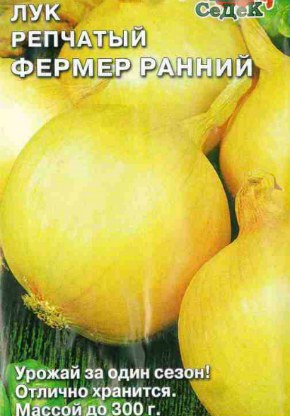
Early farmer
Early ripening is characteristic. Large onions, weighing from 140 g to 270 g. Sharp but pleasant taste. The bulb has a dense structure, round shape, thin neck. The scales are shiny, yellow, white when ripe. Vegetables are stored for a long time.
Edelweiss
The bulb has a transverse elliptical shape, the tone of the scales depends on the juiciness. In drier vegetables, the scales are yellow or brownish, with juicy pulp - snow-white. The variety belongs to high-yielding, the average weight of one vegetable is equal to or exceeds 85 grams. Leaves are erect and semi-erect, short and medium, deep green. Keeping quality is equal to 78%.
Ellan
Elite, early-maturing vegetables, resistant, in which there is a rapid development of both the underground and aboveground parts of the plant. An oblong or rounded bulb is large enough, weighs 300 grams. It has a sweetish taste with a slight twist. A good harvest can be obtained with occasional watering. The yield is higher than the norm, the shelf life of the bulbs is 8 months or more.
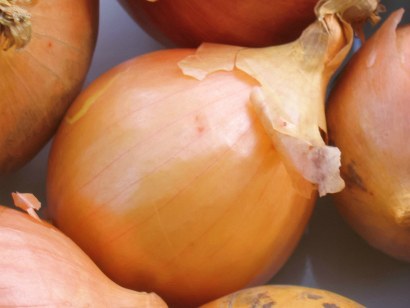
The best mid-season
Supra
The variety is perfectly stored and retains its delicate taste until spring. The structure of the onion is dense, smooth on all sides and with a rounded shape of the bulb, reaching 250 gr. "Supra" is resistant to pest damage and does not lend itself to disease. The dried scales of vegetables are dark yellow, during the growth period they are snow-white. The taste is semi-sharp.
Chalcedony
A good variety for cultivation in the south of Russia. Mid-season, harvesting occurs 95 days after sowing the seeds. The yield per square meter is up to 4 kg. Marketable onion weighs 85 g, but there are also giants up to 300-350 grams. The variety is well kept, is not susceptible to the disease of peronosporosis, but sometimes it is damaged by cervical rot.
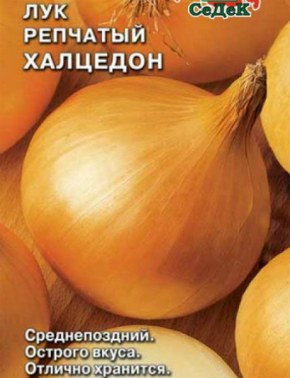
Alvina
This mid-season vegetable variety is grown by sowing seeds or planting sets. The crop is harvested 115 days after planting. Flattened bulbs, up to 80 gr. weights, palatable, semi-sharp. Dry scales are purple, red, or lilac-white. It is better to use it for canning, its preparations for the winter are good.
What is good
- Good storage performance,
- high yield of vegetables,
- full ripeness of the variety.
Arzamas local
It can be cultivated both in open and closed ground. Popular variety domestic producers... The growing season is 105 days. The vegetables are streamlined and dense in structure. Fruits are sometimes elongated with a mass of 80 grams. The pulp is snow-white, at the neck it acquires a greenish tint. Dry brownish husk with slight yellowness. The variety is valued for its yield and full ripeness. During transportation, it retains its structure, is well stored, but one of the disadvantages is its susceptibility to being hit by an onion fly. It tolerates a decrease in the temperature regime, it can be cultivated in the Non-Chernozem zone of the Russian Federation, in some regions of the Volga region, the Urals.

Late names
Volzhanin
A ripe vegetable onion, with a dry husk tightly attached to it, weighing up to 130 grams, has a rounded shape. The pulp is snow-white, pleasant to the taste, with a pronounced sharp edge. The growing season is 140 days. Depending on storage conditions, the variety can be stored for up to 9 months. With good care and timely watering, the yield is high. Zoned in the Volga region and the North Caucasus. Best grade late ripening of the bulbs.
Snowball
This is one of the varieties white onion worthy of attention, and it can be zoned everywhere. It is intended for preparing salads and keeps well until spring. Large onions of regular shape, white flesh.
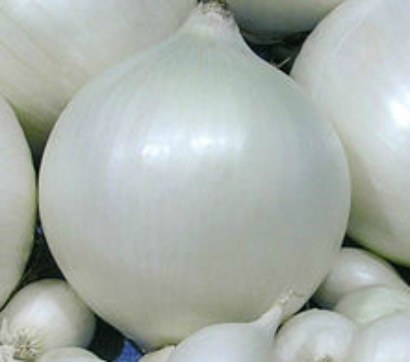
Setton
Large onions intended for long-term storage with a weight ranging from 140 g to 190 g. The pulp of the onions is yellowish with a pungent taste.
Farmer late
Late ripening variety with a spicy taste. Ball-shaped bulbs can weigh up to 350 grams. Dry scales are golden brownish, juicy ones are whitish. Vegetables are resistant to diseases and have a long shelf life.
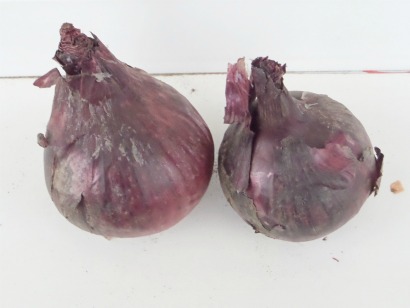
Spicy onions
A feature of the spicy variety is the rapid ripening of the bulbs. Vegetables are stored for a long time, are characterized by a high sugar content and essential oils but they are low-yielding.
Stuttgarter Riesen
Enough productive variety with an average ripening period, it is characterized by good keeping quality. Bulbs are large, flat-round and dense in structure, weighing 50-90 grams, covered with yellowish-brown scales. Vegetables can be planted before winter. Grown through sevok.
Strigunovsky local
The bulbs ripen a maximum of 3 months after planting. To obtain beautiful, juicy and dense, slightly flattened or round, pinkish-yellow specimens, it is recommended to grow the variety from seedlings. Ideal for workpieces and for use in fresh... Bulbs develop well regardless of climatic conditions, that is, crops can be obtained in areas with an arid climate and in areas where rainfall is frequent.

Galileo
The variety is intended only for growing on open place... The maturity of the bulb occurs in a period of slightly more than 4 months after planting. A large specimen can weigh 150 grams. Greenish-white flesh of dense structure, vegetables have a semi-sharp taste. Stored for up to six months.
Kaba
Due to its taste, the Kaba variety is used to add to salads and is considered one of the best. Ripening of the bulbs occurs 4 months after planting. Large vegetables have a golden yellow color with a brownish tint and weigh 200 grams. It is better to grow a crop in 1 year (from the moment of sowing seeds directly into the ground and before harvesting).
This variety is not intended for long-term storage, for the most part it is eaten as it ripens. It is characterized by a loose structure of the bulb, which leads to injury during harvesting.
Sweet onions
This type of vegetable produces a fairly high yield, tastes good, but requires a warm climate to grow.
Exhibition
The variety comes from Holland. Large, dense bulbs have a weight of 100 grams and more, a rounded and semi-elongated shape. The composition of sweet onions contains carbohydrates. The growing season ends 120 days after the seeds are planted in the soil.
- High yield of vegetables,
- large bulbs are not susceptible to disease,
- sweet,
- high adaptability to growing conditions,
- during the cultivation period, solid bulbs grow from seeds.
The only drawback of this variety is not such a long shelf life - 4-5 months.
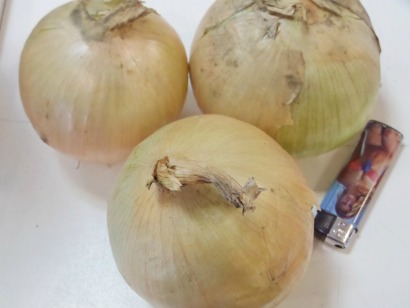
Fruit onion names
Aleko
Mid-season variety, bulbs are deep purple in color. The ripening period ends a maximum of 100 days after planting. Vegetables are characterized not only by high yields, but also by a large amount of greenery. When planting from one nest, the Aleko variety produces 2-3 bulbs, each of which has a fairly large mass - from 90 to 100 grams.
Advantages
- Large bulbs are suitable for long-term storage,
- high productivity of vegetables,
- pungency gives the dishes unusual flavoring notes.
It should be noted that the variety is susceptible to disease, therefore, at the first sign, it is necessary to fight the disease.
Golden
A mid-season variety bred as a result of painstaking selection when crossing many others. The bulbs are rounded, slightly flat in shape, some specimens can be elongated-oval. The scales are light brown or golden yellow. The pulp of vegetables is snow-white with a slight greenness. A high yield of vegetables: 2-3 kg are obtained from a garden bed with an area of \ u200b \ u200bm2. Bulb weight ranges from 50-130 grams.
Main advantages
- Low nesting, which allows you to get large bulbs,
- good keeping quality,
- excellent taste and beautiful appearance.
The "Golden" variety is preferable to grow in warm regions.

Timiryazevsky
The variety is good for cultivation in cold regions. The yield per square meter garden is 3.5 kg of onions. Dense in structure, round or flat in shape, the bulb weighs from 50 g to 70 g. The pulp is snow-white, the scales are golden yellowish.
Advantageous characteristics
- Small-breeding variety,
- high yield of vegetables, good and long shelf life,
- high adaptability to changes in weather conditions,
- short growing season.
This variety of vegetables has no drawbacks. Growing can be done in any region, since the fruits have a short ripening period.
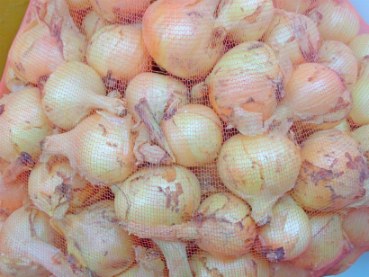
The best hybrid varieties
Benefit F1
The late-ripening hybrid came to us thanks to the selection work of Spanish scientists. Popular. Round, even and dense bulbs with dark bronze husks have a long shelf life of up to 8 months. The harvest of vegetables is above the norm. During the growing season, it grows a feather, so the variety is good both for preparing salads and preparing for the winter.
F1 bonus
An early variety of American-Japanese selection, suitable for eating and for long-term storage (up to six months). The condition for good preservation of onions in winter is good drying in autumn. Correct onions of vegetables with firm pulp and golden scales. The variety is high-yielding, as evidenced by the collection from a square from 8 to 9.5 kg, with an average fruit size of up to 75 mm.
Candy F1
From sowing the seeds of the plant to harvesting the fruit, 80-88 days pass. The highest-yielding and fastest-ripening hybrid, suitable for direct consumption and for short-term storage - up to 4 months. The hybrid is suitable for early marketing, the variety is not susceptible to pink rot.
Mazila F1
Hybrid early ripening variety. Red onions are good for eating feathers and for short-term storage, no more than 3 months. Vegetable vegetation period lasts 85-90 days. Round bulbs have a uniform structure and do not crack. The scales have a pleasant deep reddish color, the pulp is sharp in taste. Vegetables are planted in seedlings and seeding directly into the ground. The hybrid variety "Mazilla F1" is resistant to fusarium wilt, does not undergo pink rot.
Solution F1
Hybrid early variety. From sowing to harvesting, 100 days pass. The aligned bulbs are rounded, without grooves. Among the hybrid ones, they are considered the highest yielding. Dry scales of a dark brownish tone with a shiny sheen. Hybrid "Solution F1" can be grown in all regions of Russia. When growing early varietal vegetables, it is recommended to feed in a shorter time, since the growing season is short.
Benefits of the variety
- High yield,
- early ripening period,
- intended for storage,
- tastes good.
Hilton F1
The bulbs have an even, smooth, rounded shape with scales of a shiny, brown, slightly darkish color. Early ripe variety. From a square meter, you can get up to 45 kg of products. On average, onions weigh 120 g. Suitable for adding to salads, for preparing preparations with vegetables and separately, for fresh consumption. Hilton F1 fruits are stored for 4 months. Advantages: early dates ripening with high yields. Suitable for cultivation in any region of Russia.
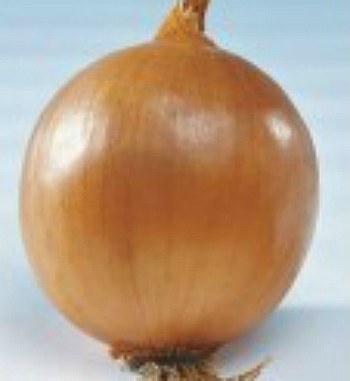
Attention!
To obtain a rich harvest, it is necessary to ensure sufficient watering, since this variety is very picky about soil moisture. The feeding period lasts until the middle of the growing season; further fertilization is impractical, since the growing season can be extended.
Universo F1
Annual hybrid variety late ripening. Vegetables have a semi-sharp taste. After germination of the first shoots and before harvesting, 115 days pass. An important condition for the normal winter storage of onions is the timely harvesting of vegetables. Work is required even before the rainy season. Onions are stored for a long time after drying in the sun. Compliance with the rules of collection and drying will provide the bulbs with long-term storage, up to 0.5 years. The inner plates of vegetables are thick-walled, crispy and quite juicy. Pleasant taste. A high-yielding variety that resists diseases such as fusarium. The onion is large in size, its most gigantic specimens reach a mass of 800 grams.
Onion sets are an important planting material. The yield of onions next year depends on its quality. Sevok is obtained by sowing nigella seeds. Onion sets are sold in shops and in the market, but experienced gardeners grow them themselves, from seeds.
To get a high yield of turnip onions in the future, you need to be able to correctly determine when to remove onion sets from the garden. It ripens 85-95 days after sowing. But this does not mean that after this period it is necessary to immediately start digging it out of the ground.
 Harvesting of onion sets is carried out depending on the natural conditions of the region and weather factors during the harvesting period. You should not start cleaning too early, but you should not delay it either. The usual harvesting period is from late July to early September. We must have time to do this before the rainy season.
Harvesting of onion sets is carried out depending on the natural conditions of the region and weather factors during the harvesting period. You should not start cleaning too early, but you should not delay it either. The usual harvesting period is from late July to early September. We must have time to do this before the rainy season.
If dew began to appear on the grass in the morning, and the nights became cooler, then you should not hesitate in harvesting the onion sets.
There are certain signs that show that the onion sets are fully ripe and can be removed from the garden:

There is no need to wait for the lodging of the leaves. When harvesting is late, ripe onions begin to sprout new roots. Such bulbs are worse stored, and when planted next year, they will begin to shoot.
If the summer is rainy, do not wait for the bulb to fully ripen. It is best to harvest early and dry to avoid rotting and disease. To speed up the ripening of the onion, you can cut the roots with a knife or a hoe 5-6 cm below the bottom 10-15 days before harvesting.
The onion sets left on the vine in rainy weather will grow, will be poorly stored, and when planted in spring, mass flowering may begin.
Cleaning and stopping watering
You should start digging in dry weather. It is undesirable to dig out the sevok with a shovel or pull it out with your hands. It is best to undermine it with a pitchfork. You can leave the onions in the garden until the evening to dry the earth. Then free the bulbs from the adhering soil.
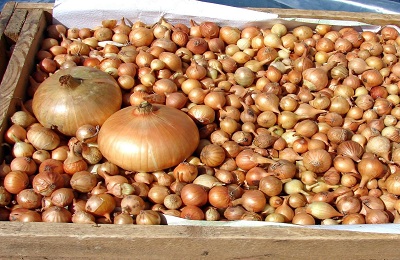 You can't hit the bow on the ground. It is better to peel the bulbs with your hands, while shaking slightly. Sevk should be handled very carefully. Even the smallest scratches and damage can lead to disease and decay.
You can't hit the bow on the ground. It is better to peel the bulbs with your hands, while shaking slightly. Sevk should be handled very carefully. Even the smallest scratches and damage can lead to disease and decay.
Some people, when it comes time to harvest the onion sets, to shorten the time, first cut off all the dry leaves, and then dig out the garden bed. But experts recommend trimming the tops as late as possible in order to prevent pathogenic microbes from entering the bulb.
Tips from PROFESSIONAL GARDENERS Many of our readers for a RICH HARVEST actively use the effective biofertilizer Biogrow. This fertilizer is suitable for all types and varieties of cultivated plants. Allows increase yields by 50% NO hazardous chemicals. And all that is needed for this is to add biofertilizer to the soil 2-3 times per season.
The closer the onion ripening period, the more attentively you need to treat its condition. Onions require careful maintenance. During the growing season, it must be weeded several times, fertilized, and watered.
All onion plants require regular but moderate watering. They are watered immediately after planting, then they do it every 7-10 days during May, June and the first decade of July. Then you should repeat this much less often. Watering stops 20 days before harvesting.
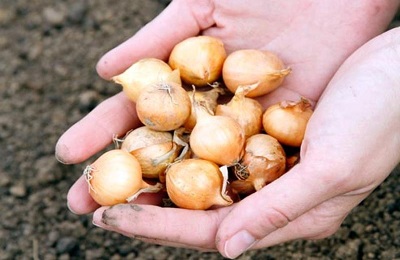 The right moment can be determined by the condition of the bulb. It is by this time finally formed. If you continue watering, the onion will grow further, but before harvesting, the onion must ripen, and not further grow.
The right moment can be determined by the condition of the bulb. It is by this time finally formed. If you continue watering, the onion will grow further, but before harvesting, the onion must ripen, and not further grow.
Another sign that it is no longer worth watering is yellowing and complete lodging of the leaves - it's time to start harvesting.
How to dry onion sets
After you have finished harvesting the onion sets, you should dry it for a week or two. During this time, the bulbs have time to absorb all the nutrients from the leaves and dry out. And the leaves dry up completely. To do this, spread the onion in a thin layer on a dry surface. From time to time, you should stir up the scattered onions to dry evenly.
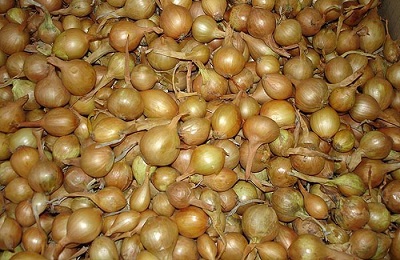 Usually dried in a well-ventilated and sunny place: under a canopy, in a veranda or attic. Best in a draft. If the weather permits, the first stage of drying can be carried out directly in the garden.
Usually dried in a well-ventilated and sunny place: under a canopy, in a veranda or attic. Best in a draft. If the weather permits, the first stage of drying can be carried out directly in the garden.
Insufficiently dried onions do not store well. It is susceptible to various diseases: downy mildew, neck rot. This is the initial drying phase. After it, you need to cut off all the leaves, leaving the neck 2-3 cm. It is necessary to cut off the roots under the very heel of the bulb, without affecting it.
For the second stage of drying, a room with a temperature of 25-30 C o is required. At the end of drying, the temperature is raised to 40 ° C and the set is left for another half day.
This kills all bacteria and helps preserve the crop better. Do not overdry, otherwise the scales will begin to flake off and crack. Properly dried onions have a solid, solid husk, rustle in the hands, and have no foreign odors.
Storage preparation
The main task of the gardener is not only to remove the set on time and dry it correctly, but also to preserve it until spring. After drying, the onions should be sorted out, sorted. For planting, choose bulbs measuring 1.5-2 cm. Healthy, without damage and rot are selected. One rotten speck can ruin an entire crop.
For sorting the sets, a calibration sieve with different hole sizes is used. But you can do it manually. Usually, onions are divided into three types:
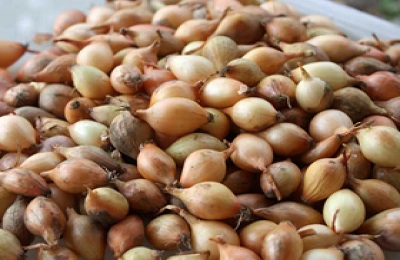
In order to harvest a high harvest next year, some gardeners plant very small seedlings in the ground in the fall. Unlike home storage, such seedlings are stored very well in the soil. In spring, it rises quickly, does not let flower stalks, forms a large number of large bulbs.
Although the sample gives larger fruits, its overall yield is much lower than that of a standard seed drill. Sometimes a large set gives an arrow. The best and most proven is the medium-sized set. It provides the largest harvest.
IMPORTANT!
Is your blood pressure constantly jumping? After taking the pills, does it come back after a while? Hypertension can lead to stroke, heart attack, enlargement of the heart, and ultimately heart failure. Remember! Your blood pressure will be 120/80 without chemicals and pills in just 5 days. VESSELS will be restored and cleansed if on an empty stomach in the morning ...
How to store onion sets
You can store the collected set in the basement, room or closet. The room must be dry and cool. In a room with high humidity, onions begin to rot. The first sign of rot is the appearance of a midge. In this case, you need to sort out the onion, dry it well and move it to a drier room.
 To preserve the harvest, boxes, fabric (preferably gauze) bags or baskets are used. Some gardeners use nylon stockings. Can be sprinkled in a thin layer on a shelf or basement floor. Put onions in boxes in a layer of 6-7 cm, and put no more than 3-4 kilograms in bags.
To preserve the harvest, boxes, fabric (preferably gauze) bags or baskets are used. Some gardeners use nylon stockings. Can be sprinkled in a thin layer on a shelf or basement floor. Put onions in boxes in a layer of 6-7 cm, and put no more than 3-4 kilograms in bags.
Storage temperature from 10 to 25 C o, humidity - no more than 65%. There are varieties that require more low temperatures... But temperature fluctuations should not be allowed. From this, the onions begin to deteriorate, and when planting, they start to flower stalks.
Highly good way onion storage - underground:
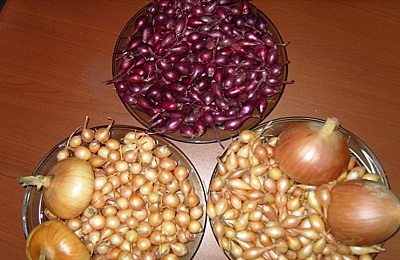
The onions are kept fresh until spring. In the spring, such a bucket onion cannot be stored for a long time, it must be planted within a week, otherwise it does not withstand the change in temperatures, and begins to deteriorate.
Conclusion
Onion sets are very unpretentious, they give a good harvest both outdoors and indoors. It can also be grown in greenhouses.
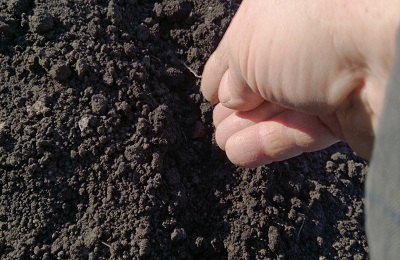 To obtain consistently large onion yields, the gardener needs to plant seeds and get a good onion set. And next year, grow large bulbs from this set. To do this, it is important to be able to grow, according to all the rules, collect onion sets and save it until next spring.
To obtain consistently large onion yields, the gardener needs to plant seeds and get a good onion set. And next year, grow large bulbs from this set. To do this, it is important to be able to grow, according to all the rules, collect onion sets and save it until next spring.
The recommended measures give full confidence in the quality of the seed, that it has been stored properly, and is not contaminated with diseases. Own material is grown on its own site and adapted to the composition of the soil.
In addition, even the most experienced gardener will not always be able to choose the right seeds on the counter and be sure of their quality.
Therefore, only self-grown onion sets guarantee a high yield of turnip onions.
Do you still think that getting rid of cardiovascular diseases is impossible?
- do you often have pain and discomfort in the chest?
- it seems to you that the heart is almost "jumping out" of the chest, then freezes for a while ...
- you have shortness of breath even after minor physical exertion ...
- headaches, poor sleep, feelings of weakness and increased fatigue ...
- in the evening my legs swell ...


